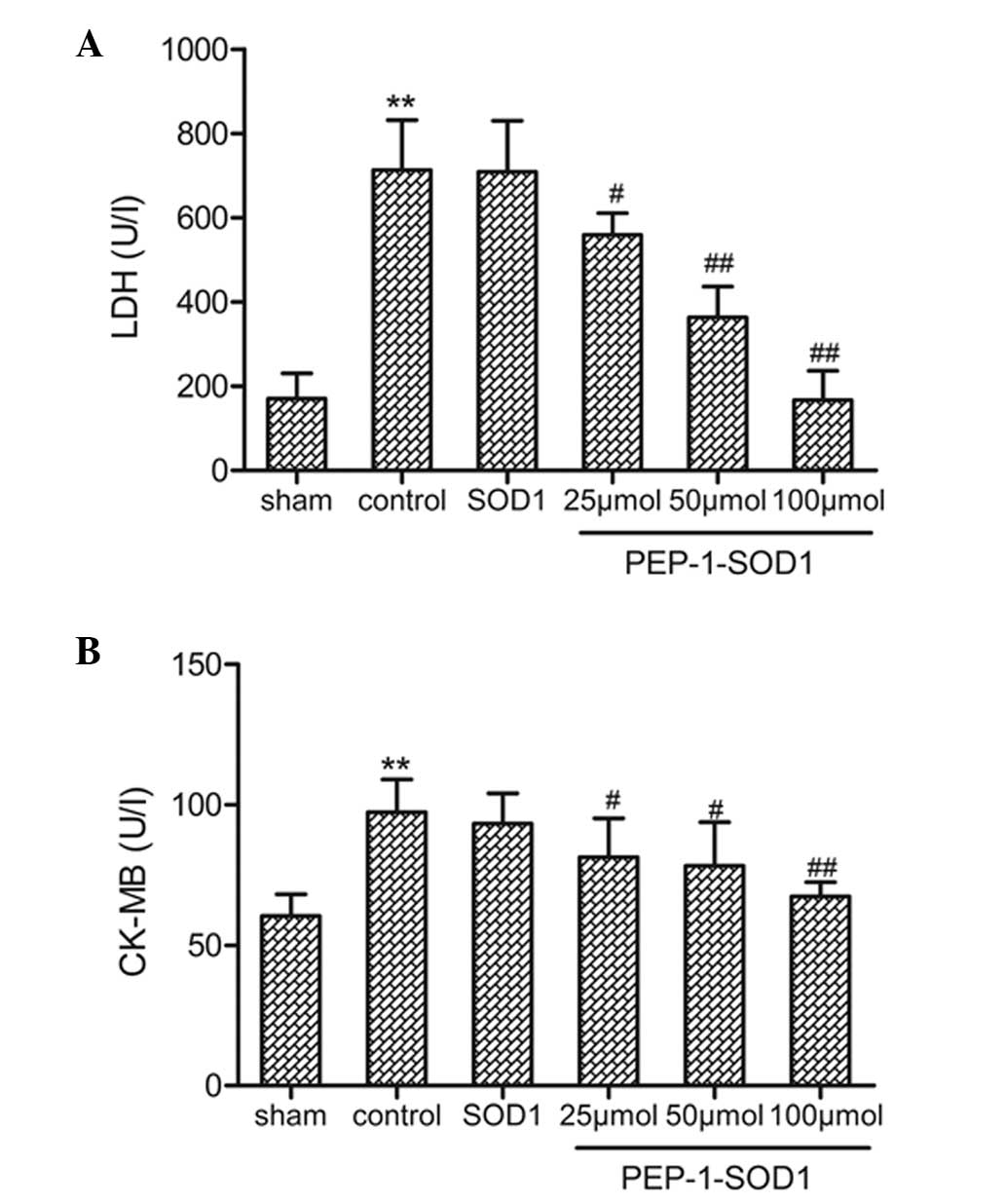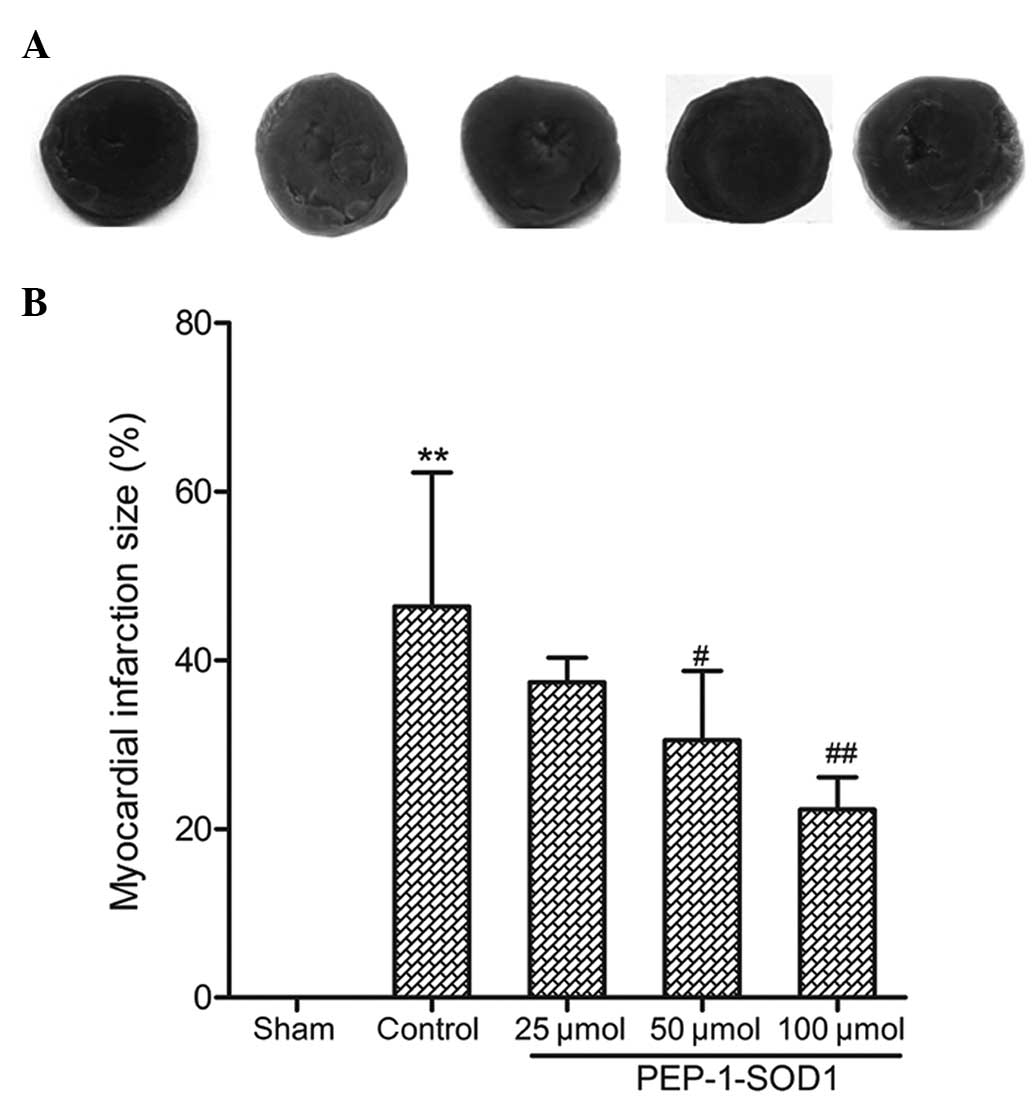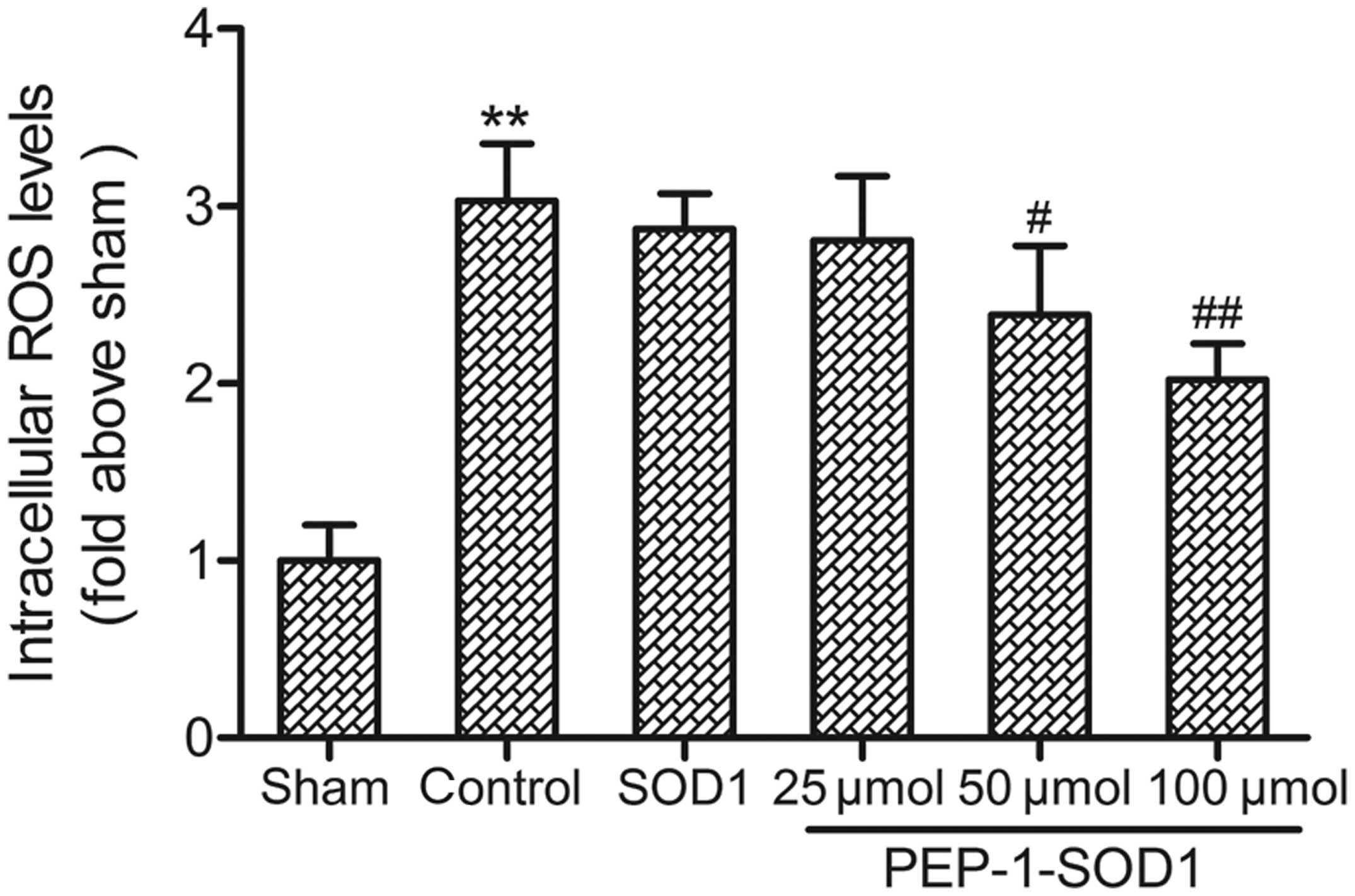|
1
|
Forini F, Nicolini G and Iervasi G:
Mitochondria as key targets of cardioprotection in cardiac ischemic
disease: Role of thyroid hormone triiodothyronine. Int J Mol Sci.
16:6312–6336. 2015. View Article : Google Scholar : PubMed/NCBI
|
|
2
|
Kalogeris T, Bao Y and Korthuis RJ:
Mitochondrial reactive oxygen species: A double edged sword in
ischemia/reperfusion vs. preconditioning. Redox Biol. 2:702–714.
2014. View Article : Google Scholar : PubMed/NCBI
|
|
3
|
Vijayasarathy K, Shanthi Naidu K and
Sastry BK: Melatonin metabolite 6-Sulfatoxymelatonin, Cu/Zn
superoxide dismutase, oxidized LDL and malondialdehyde in unstable
angina. Int J Cardiol. 144:315–317. 2010. View Article : Google Scholar : PubMed/NCBI
|
|
4
|
Zhang YE, Fu SZ, Li XQ, et al: PEP-1-SOD1
protects brain from ischemic insult following asphyxial cardiac
arrest in rats. Resuscitation. 82:1081–1086. 2011. View Article : Google Scholar : PubMed/NCBI
|
|
5
|
Kim MJ, Jeong HJ, Kim DW, et al:
PEP-1-PON1 protein regulates inflammatory response in raw 264.7
macrophages and ameliorates inflammation in a TPA-induced animal
model. PLoS One. 9:e860342014. View Article : Google Scholar : PubMed/NCBI
|
|
6
|
He XH, Wang Y, Yan XT, et al: Transduction
of PEP-1-heme oxygenase-1 fusion protein reduces myocardial
ischemia/reperfusion injury in rats. J Cardiovasc Pharmacol.
62:436–442. 2013. View Article : Google Scholar : PubMed/NCBI
|
|
7
|
Dong X, Wang JN, Huang YZ, Guo LY and Kong
X: Cell-penetrating peptide PEP-1-mediated transduction of enhanced
green fluorescent protein into human colorectal cancer SW480 cells.
Ai Zheng. 26:216–219. 2007.PubMed/NCBI
|
|
8
|
Henriques ST, Costa J and Castanho MA:
Translocation of beta-galactosidase mediated by the
cell-penetrating peptide pep-1 into lipid vesicles and human HeLa
cells is driven by membrane electrostatic potential. Biochemistry.
44:10189–10198. 2005. View Article : Google Scholar : PubMed/NCBI
|
|
9
|
Kim W, Kim DW, Yoo DY, et al:
Neuroprotective effects of PEP-1-Cu,Zn-SOD against ischemic
neuronal damage in the rabbit spinal cord. Neurochem Res.
37:307–313. 2012. View Article : Google Scholar : PubMed/NCBI
|
|
10
|
Zhang L, Dong XW, Wang JN, et al:
PEP-1-CAT-transduced mesenchymal stem cells acquire an enhanced
viability and promote ischemia-induced angiogenesis. PLoS One.
7:e525372012. View Article : Google Scholar : PubMed/NCBI
|
|
11
|
Zhang YE, Wang JN, Tang JM, et al: In vivo
protein transduction: Delivery of PEP-1-SOD1 fusion protein into
myocardium efficiently protects against ischemic insult. Mol Cells.
27:159–166. 2009. View Article : Google Scholar : PubMed/NCBI
|
|
12
|
Ke ZP, Wang JN, Tang JM, et al: The role
of PEP-1-SOD1 fusion protein on ischemia-reperfusion injury in
isolated perfused rat hearts. Zhonghua Xin Xue Guan Bing Za Zhi.
37:268–274. 2009.(In Chinese). PubMed/NCBI
|
|
13
|
Huang GQ, Wang JN, Tang JM, et al: The
combined transduction of copper, zinc-superoxide dismutase and
catalase mediated by cell-penetrating peptide, PEP-1, to protect
myocardium from ischemia-reperfusion injury. J Transl Med.
9:732011. View Article : Google Scholar : PubMed/NCBI
|
|
14
|
Wang JN, Ding P, Huang YZ, Luo LN, Guo LY,
Kong X and Shao F: The protective effect of PEP-1-SOD1
preconditioning on hypoxia/reoxygenation injury in cultured human
umbilical vein endothelial cells. Zhonghua Xin Xue Guan Bing Za
Zhi. 35:750–756. 2007.(In Chinese). PubMed/NCBI
|
|
15
|
Bhandary BI, Piao CS, Kim DS, Lee GH, Chae
SW, Kim HR and Chae HJ: The protective effect of rutin against
ischemia/reperfusion-associated hemodynamic alteration through
antioxidant activity. Arch Pharm Res. 35:1091–1097. 2012.
View Article : Google Scholar : PubMed/NCBI
|
|
16
|
Curtis MJ and Walker MJ: Quantification of
arrhythmias using scoring systems: An examination of seven scores
in an in vivo model of regional myocardial ischaemia. Cardiovasc
Res. 22:656–665. 1988. View Article : Google Scholar : PubMed/NCBI
|
|
17
|
Gong JS, Yao YT, Fang NX and Li LH:
Sevoflurane postconditioning attenuates reperfusion-induced
ventricular arrhythmias in isolated rat hearts exposed to
ischemia/reperfusion injury. Mol Biol Rep. 39:6417–6425. 2012.
View Article : Google Scholar : PubMed/NCBI
|
|
18
|
Lee JI, Wook Nha K, Suh JS, Choo SK, Park
JH and Park JW: Remote postconditioning attenuates
ischemia/reperfusion injury in rat skeletal muscle through
mitochondrial ATP-sensitive K+ channel-dependent
mechanism. J Reconstr Microsurg. 29:571–578. 2013. View Article : Google Scholar : PubMed/NCBI
|













